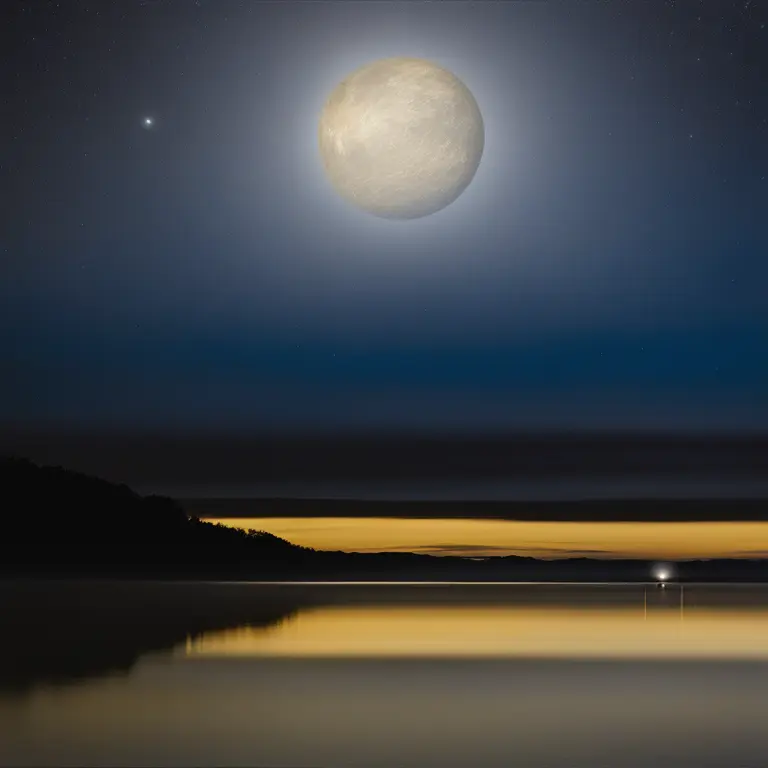
Stargazing and Moonlight: Optimal Moon Phases for the Stars
Discover the best moon phases for stargazing to enhance your nocturnal celestial observations and experiences.
article by Priya Deshmukh
The Illuminating Factor of Moonlight
In the cosmic ballet of the night sky, the Moon's luminosity plays a crucial role. As amateur astronomers and stargazing aficionados can attest, the brightness of our celestial neighbor can either hinder or help our ability to observe the stars. Understanding the phases of the Moon helps in planning the optimal stargazing experience—it's all about timing and the interplay of light in the expansive theater above. The moonlight's intensity can obscure the faint sparkle of distant stars, therefore choosing the right nights for stargazing is vital to maximize the night sky's visibility.

The Dark Canvas of the New Moon
For observers dreaming of an unhindered view of the heavens, the New Moon phase, when the Moon is nestled between the Earth and the Sun, provides the darkest backdrop for stargazing. This celestial condition occurs approximately once a month, offering a few nights when the absence of moonlight unveils the faintest stars and galaxies. During a New Moon, the sky's darkness is the canvas upon which the splendor of the Milky Way and other celestial phenomena can be observed in their full glory. The absence of moonlit interference is particularly favorable for witnessing deep-sky objects with the naked eye or a telescope.

First Quarter Moon: The Balancing Act
As the Moon waxes to the First Quarter phase, only half of its visible surface is illuminated. This phase creates a balance for stargazers; early evening observations benefit from a less intense moonlight, allowing viewing of prominent celestial objects. As the night progresses and the Moon sits higher in the sky, its glare begins to drown out the stars. Therefore, strategic planning is needed: observing during the early hours of the evening during this phase can yield both the majesty of a luminous lunar view and the sparkling beauty of stars and planets.

Full Moon: The Luminous Challenger
The Full Moon phase, while breathtaking, is challenging for star explorers seeking the dimmer gems of the night sky. Its radiant light can outshine the stars, making it less than ideal for observing nebulas and galaxies. However, it is not without its own merits, as lunar enthusiasts and photographers can harness this phase to capture the details of the Moon's surface. For serious stargazers, it is best to wait a few days after the Full Moon when its brightness begins to diminish, slowly but surely restoring star visibility.

The Waning Moon and Stargazing
The waning phases of the Moon offer increasing opportunities for stargazers to capture the night sky's quiet beauty. As the Moon shrinks back to a slender crescent, the pre-dawn hours become particularly promising for observers. Those early morning sessions can reward the dedicated with sightings of dimmer constellations and the serenity of a dark sky slowly brightening with the approach of dawn. The waning phases encourage us to reverse our schedules – to seek out the majesty of the stars in the early hours before the world awakens.
Other Celestial Events in 2024 and Beyond
When considering lunar phases for stargazing, one must also take into account the celestial events anticipated in the upcoming years. Mark your calendars for meteor showers, eclipses, and planetary alignments in 2024 and beyond, when the moon phase will play a pivotal role in the visibility and splendor of these occurrences. Aligning your stargazing sessions with these events, considering the moon phase, can lead to unforgettable astral experiences. The dance of planets and the streak of meteors can be best appreciated when the Moon shares the stage gracefully, with a lesser role.
Published: 1/19/2024
Modified: 1/19/2024
More predictions
Come back here soon to learn more about yourself and your future


Moon Phases: Celestial Dynamics and Impact
Discover the intriguing facts about moon phases and their significance in celestial dynamics, astrology, and personal biorhythms.


Moon Phase Soulmates: Cosmic Bonds in Love
Discover the enchanting connection between moon phases and soulmate relationships in this insightful article on cosmic synergy in love.


The Accuracy of Moon Phase Watches
Discover the precision of moon phase watches and their place in the intersection of timekeeping and celestial movements.